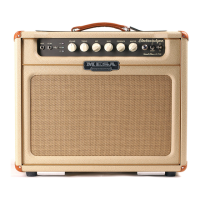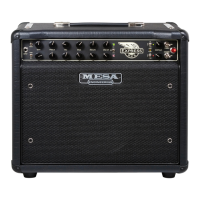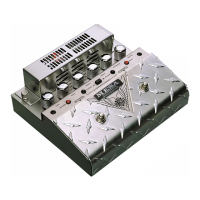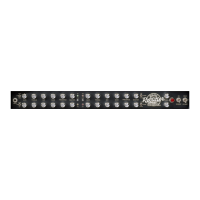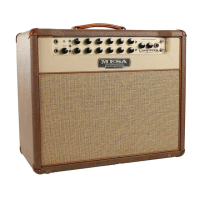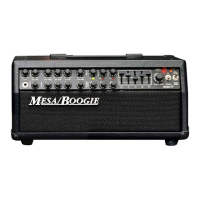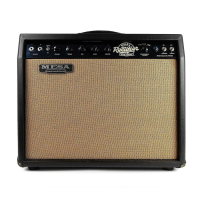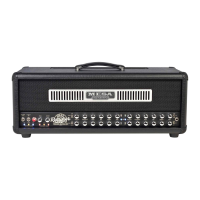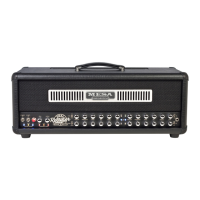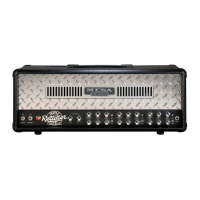PAGE 14
EFFECTS LOOP:
The Express Plus incorporates an internal EFFECTS LOOP to handle the interfacing of outboard processing.
This circuit is a patch point between the preamp and the power section and it is wired in series with the dry (unaffected) signal. Since
this loop is a series-type loop (as opposed to parallel - where the loop signal runs alongside the dry signal) it is
important that you use good quality processors “in the middle” of your amp. While the loop is compatible with most
processor Input/Output impedance demands, there can be a lot of room for sonic compromise in some of the less
expensive units. Remember that every part in your signal path is a tone part.
NOTE: Always use good quality shielded cable of the shortest possible length when patching your effects. One
foot lengths are preferable - with lengths of more than 3 feet (each cable) starting to roll off top end and reduce
upper midrange punch and top end clarity.
To use the EFFECTS LOOP;
1) Connect the SEND jack to your processor’s Input
2) Connect the RETURN jack to your processor’s Output
3) Adjust the processor’s Input/Output Level attenuator to achieve unity gain while plugging the RETURN cable in and out making
fine adjustments at the processor until you hear no level difference.
NOTE: The EFFECTS LOOP is optimized for professional quality rack mount processors. Most pedal type effects work better in the
“front-end” between your instrument and the INPUT. You may experience some tonal changes because of the additional cable and the
fact that your instrument will no longer be going straight into the grid of the first tube. It’s up to you to decide if the trade off is acceptable.
NOTE: With a delay in the Loop – it is normal to experience a brief volume surge when switching between Channels set to different
Multi-Watt Power Settings. This occurs due to the Channel MASTER controls being the SEND source for the Loop - and they can be
set differently for different wattages to achieve balance between the channels.
SPEAKERS:
These jacks handle the output to speaker cabinets or the internal combo speaker in your Express Plus. There
is one 8 Ohm and two 4 Ohm jacks here and between these outputs, most popular speaker combinations can be accommodated.
You’ll find that different impedance loads change the way your amp sounds and feels - and though it is
usually best to match the load you are using to the matching SPEAKER impedance output – you may find
a certain mismatch combination to your liking. For example, some players like the tighter, bolder correct-
match-response of an 8 Ohm speaker on the 8 Ohm SPEAKER output. Others may prefer the scoopier,
more elastic vibe of the 8 Ohm speaker on the 4 Ohm jack.
reAr PANeL: CONTrOLS & FeATureS (Continued)
120V
~
60 Hz
1 A
7,602,927
6,724,897
SOLOEQ
5:25+
FOOTSW.
120V
~
60 Hz
1 A
7,602,927
6,724,897
SOLOEQ
5:25+
FOOTSW.
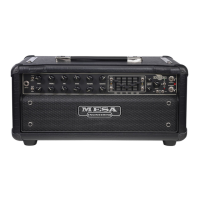
